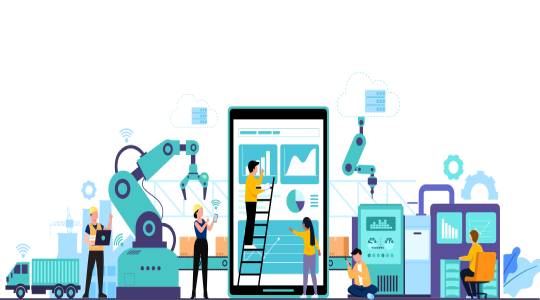What Makes Data Collection, Harmonization, and Analysis Critical to Industrial IoT Application Realization
The manufacturing industry is undergoing transformative changes thanks to the widespread adoption of Industrial Internet of Things (IIoT) solutions globally. From smarter machine controls to enabling better visibility for operational facets within the factory floor and creating autonomous asset health monitoring and maintenance, IIoT is bringing a whole new class of automation capabilities and accelerating the move to Industry 4.0 worldwide.
Studies estimate that by 2026 there will be a USD 106.1 billion worth of market size for IIoT worldwide.
As the opportunities grow, there is also a need for leaders to have a clear awareness of the core pillars that facilitate successful IIoT implementations in their business. Data collection, harmonization, and analysis are undoubtedly the most important one. It is critical to enable the seamless transformation of the industrial landscape with IIoT applications and the major fuel driving the Industry 4.0 engine for any business in the manufacturing or industrial sector.
What makes data collection, harmonization, and analysis important for IIoT?
Industrial assets today offer limitless volumes of data from operations with high granular diversity for the data as well. For example, a smart factory generates data from different modules like equipment sensors, controller circuitry, robotic devices, IO modules, resource movement and logistics, environment sensors, etc. to name a few. An IIoT application works effectively when it can process data from all these sources and arrive at the best decisions.
Every component within the ecosystem is important and cannot be left out for any of the collection, harmonization, and analysis phases. Let us examine closely the 3 major benefits manufacturers can derive from such data operations:
Predictive Maintenance
With so many moving mechanical and electronic parts involved across an industrial establishment, maintenance and upkeep of the infrastructure will be one of the biggest pain points for businesses in the industrial domain. Knowing when to run maintenance activities, identifying components that must be repaired or replaced on time to prevent disruption in production are all elements of paramount importance.
The role of data: This is where data collection, harmonization, and analysis come into the picture. By aggregating data from across different physical components, and by sequencing their workflows and running analytical comparisons, it is possible for businesses to develop accurate maintenance cycles for factory assets. They can predict when a piece of equipment or machine may stop working or when it needs replacement. This helps in proactive maintenance allowing businesses to run their business infrastructure in optimal condition all through the year.
Maximize Component Efficiency
While maintenance is one side of the equation for improving the lifetime and productivity of factory infrastructure, the other side is related to how efficiently each piece of equipment is utilized to achieve desired production outcomes.
The role of data: By collecting operational data and building simulation models, businesses can learn about how machines work and respond in different scenarios and then accordingly provide insights into their design, load capacity, resource consumption schedules, and much more. In short, businesses can create operational models that eliminate wastage, reduce effort, and maximize output.
Easy Scalability
Smart factories and industries work as a connected ecosystem of devices and equipment that gets the job done faster and more accurately.
The role of data: However, for end-to-end coordination between different systems to enable a seamless flow of information and control insights between connected machinery, processes and people, it is important to harmonize the flow of data within an industrial establishment. Only then would it be possible to orchestrate devices to work in tandem with new components to help in scaling up the network of connected entities in a smart industrial establishment.
The Challenges
While these data initiatives deliver tangible benefits and support the growth of IIoT applications within an industrial establishment, the journey of achieving their objective is not without challenges.
- Bringing together data from such a diverse set of sources within the factory floor as well as from their staff deployed across facilities is in itself a Herculean task.
- Different interfaces within existing enterprise applications may not have information and data exchange capabilities needed to be interoperable for a connected IIoT ecosystem.
- The data sources may be running vulnerable legacy hardware and software components which can pose security risks at the consumption side when an IIoT application is deployed.
- Besides, there may be complexities that may arise due to a combination of cloud and on-premises business applications or platforms running across the establishment that needs to be integrated with an IIoT application for effective insight generation.
Moving ahead in the IIoT space requires powerful and advanced technology that can help in seamlessly collecting, harmonizing, and analyzing data from across a broad range of sources.
Solutions like Delpheon are designed to help enterprises leverage the most out of their IIoT investments. By facilitating better data flow and control insights between components on the factory flow, Delpheon allows industrial establishments to transform their operational infrastructure into a future-ready establishment with high ROI.
Get in touch with us to know more.



